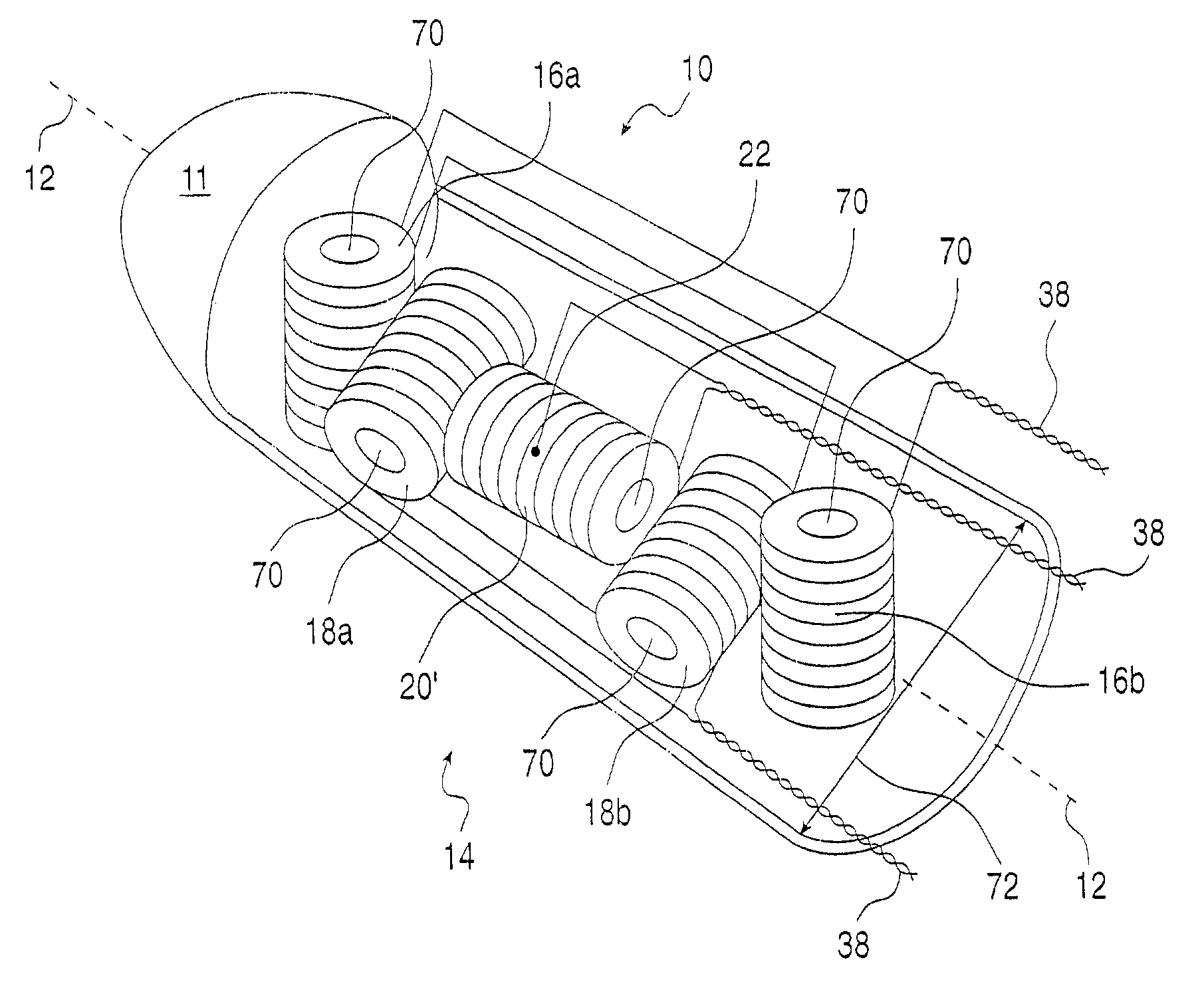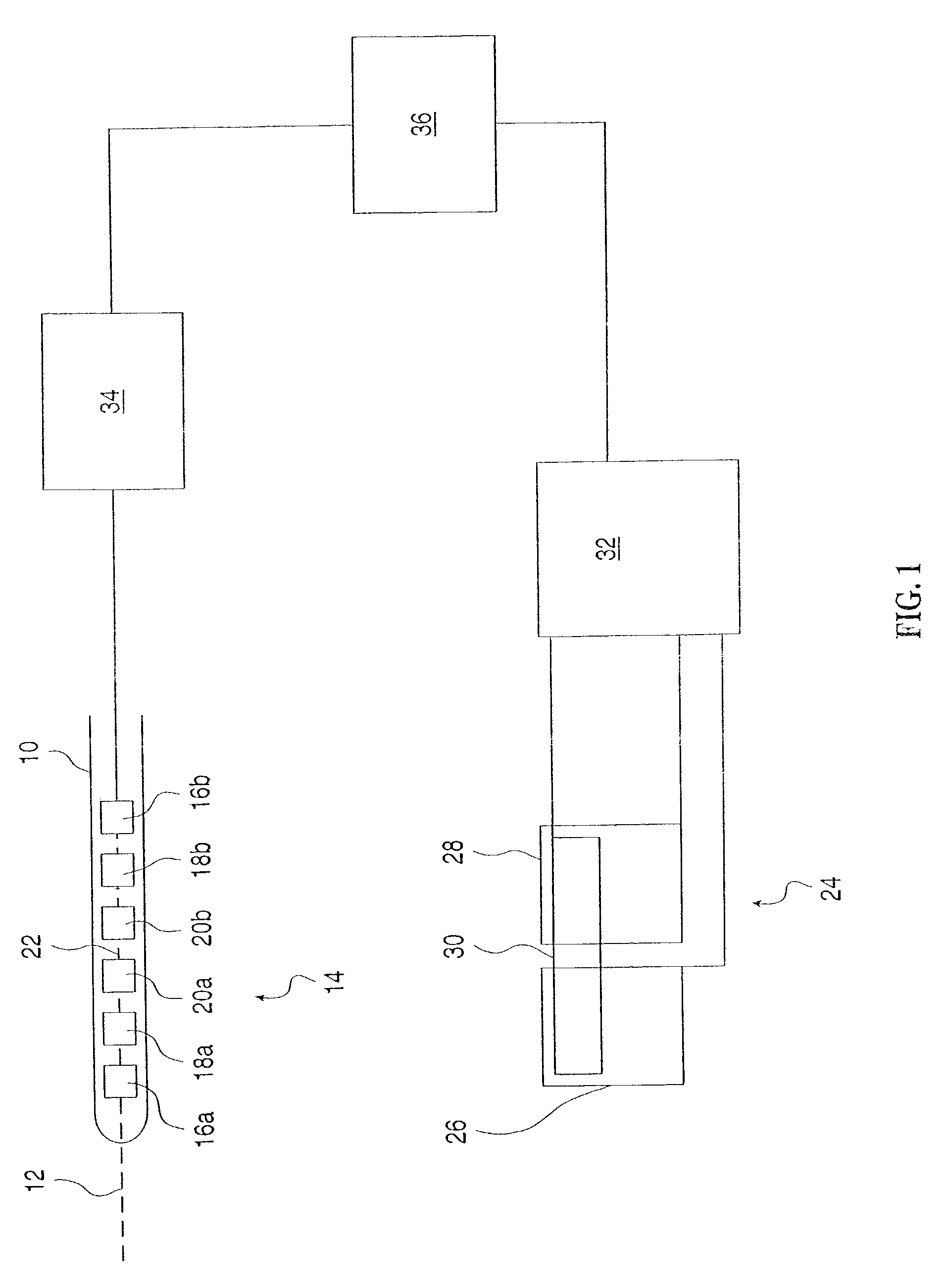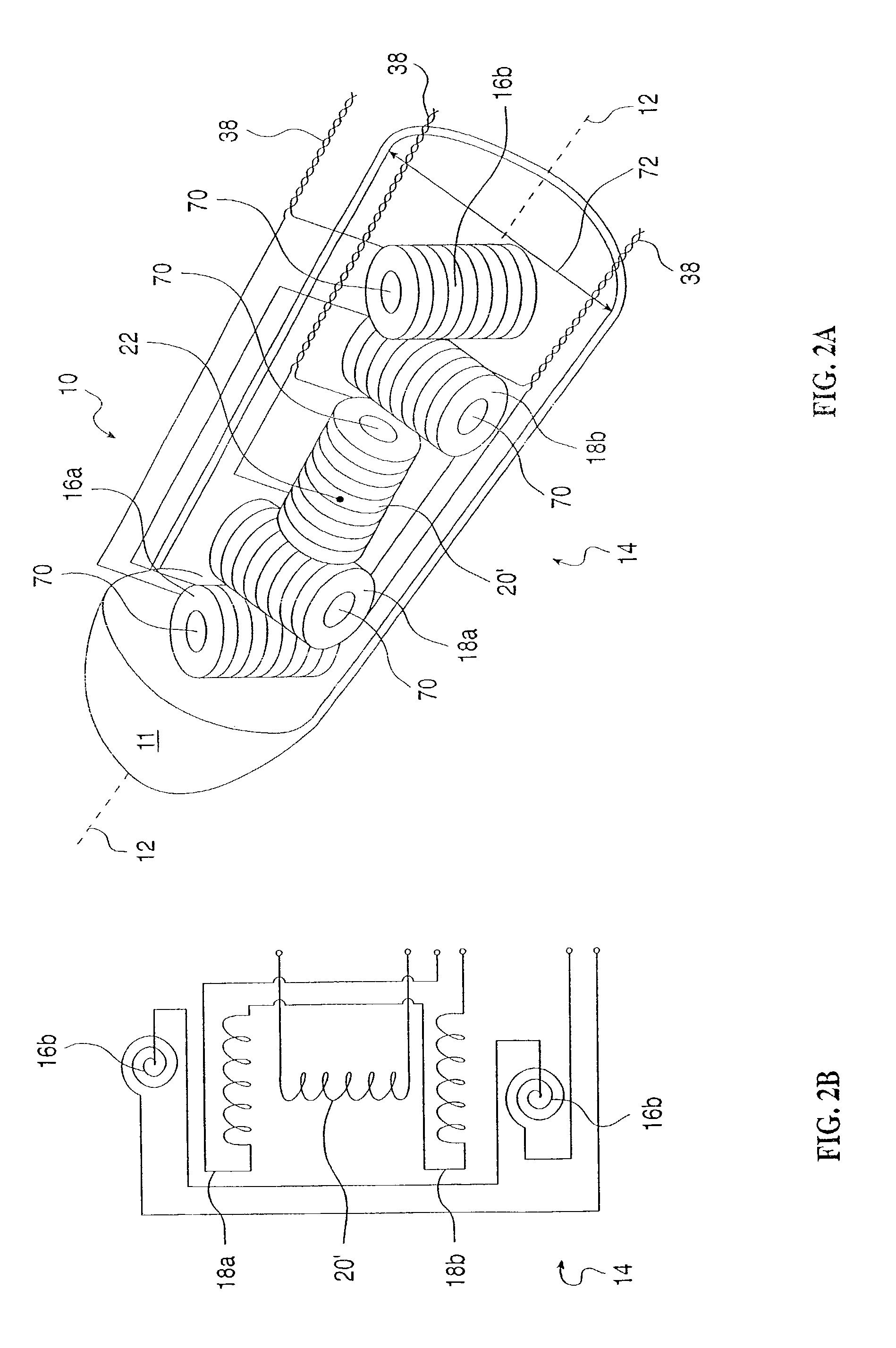Intrabody navigation system for medical applications
a technology for medical applications and navigation systems, applied in the field of electromagnetic tracking devices, can solve the problems of reducing the accuracy of position and orientation measurements, unable to fit a receiver of sufficient sensitivity inside a medical probe, and fatally non-representative measurements at a single point, so as to achieve the effect of suppressing electromagnetic field distortion
- Summary
- Abstract
- Description
- Claims
- Application Information
AI Technical Summary
Benefits of technology
Problems solved by technology
Method used
Image
Examples
Embodiment Construction
[0068]The present invention is of a system and method for tracking the position and orientation of an object relative to a fixed frame of reference. Specifically, the present invention can be used to track the motion of a medical probe such as a catheter or an endoscope within the body of a patient.
[0069]The principles and operation of remote tracking according to the present invention may be better understood with reference to the drawings and the accompanying description.
[0070]Referring now to the drawings, FIG. 1 illustrates, in general terms, a system of the present invention. Within a probe 10 is rigidly mounted a receiver 14. Receiver 14 includes three field component sensors 16, 18, and 20, each for sensing a different component of an electromagnetic field. Sensor 16 includes two sensor elements 16a and 16b. Sensor 18 includes two sensor elements 18a and 18b. Sensor 20 includes two sensor elements 20a and 20b. Typically, the sensor elements are coils, and the sensed component...
PUM
 Login to View More
Login to View More Abstract
Description
Claims
Application Information
 Login to View More
Login to View More - R&D
- Intellectual Property
- Life Sciences
- Materials
- Tech Scout
- Unparalleled Data Quality
- Higher Quality Content
- 60% Fewer Hallucinations
Browse by: Latest US Patents, China's latest patents, Technical Efficacy Thesaurus, Application Domain, Technology Topic, Popular Technical Reports.
© 2025 PatSnap. All rights reserved.Legal|Privacy policy|Modern Slavery Act Transparency Statement|Sitemap|About US| Contact US: help@patsnap.com



